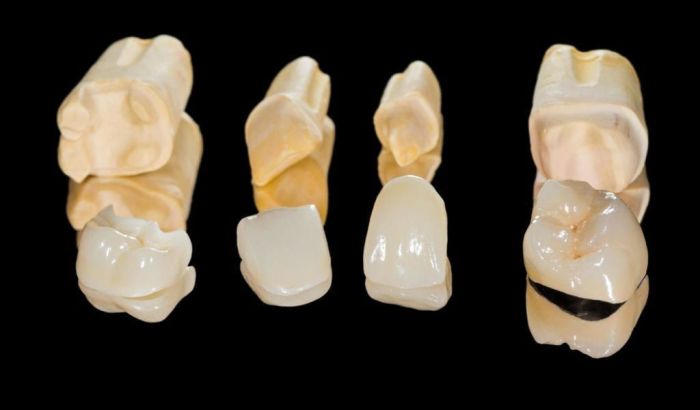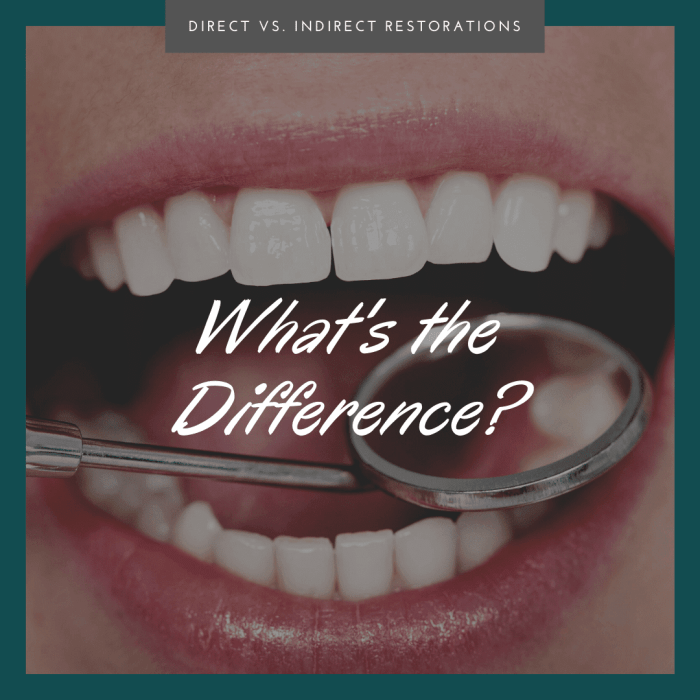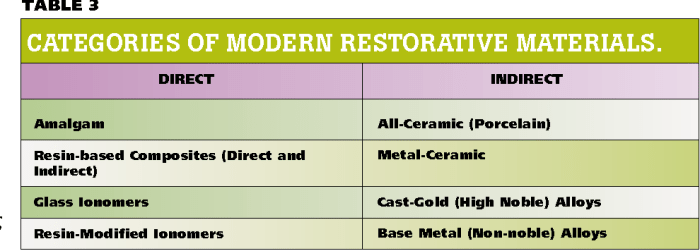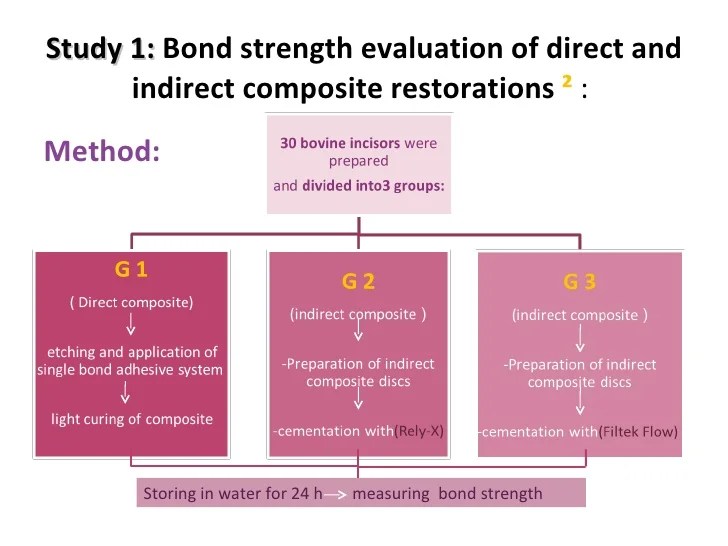Differentiate between direct and indirect restorative materials – Differentiating between direct and indirect restorative materials is crucial for dental professionals to provide optimal patient care. Direct restorative materials are placed directly into the prepared tooth cavity, while indirect restorative materials are fabricated outside the mouth and then bonded or cemented into place.
This article aims to provide a comprehensive overview of the properties, advantages, disadvantages, and clinical applications of both types of restorative materials, empowering clinicians to make informed decisions based on individual patient needs.
Define Direct and Indirect Restorative Materials

Restorative materials are used in dentistry to repair or replace damaged or decayed teeth. They can be classified into two main types: direct and indirect.
Direct restorative materialsare applied directly to the prepared tooth surface. They are typically used for small to medium-sized restorations, such as fillings and crowns.
Indirect restorative materialsare fabricated outside the mouth and then bonded or cemented to the prepared tooth surface. They are typically used for larger restorations, such as bridges and dentures.
Examples of direct restorative materials include:
- Composite resin
- Glass ionomer cement
- Amalgam
Examples of indirect restorative materials include:
- Porcelain
- Zirconia
- Metal alloys
Comparison of Direct and Indirect Restorative Materials

| Property | Direct Restorative Materials | Indirect Restorative Materials |
|---|---|---|
| Strength | Lower | Higher |
| Durability | Lower | Higher |
| Aesthetics | Good | Excellent |
| Cost | Lower | Higher |
Advantages and Disadvantages of Direct Restorative Materials
Advantages
- Less time-consuming
- Less expensive
- Can be used for a variety of restorations
Disadvantages, Differentiate between direct and indirect restorative materials
- Lower strength and durability
- Can be more difficult to achieve a good aesthetic result
- Higher strength and durability
- Better aesthetic results
- More time-consuming
- More expensive
- Cannot be used for all types of restorations
- The size and location of the restoration
- The strength and durability required
- The aesthetic result desired
- The cost
- The patient’s preferences
- Prepare the tooth surface.
- Apply the restorative material to the prepared tooth surface.
- Shape and contour the restorative material.
- Light-cure or chemically cure the restorative material.
- Finish and polish the restoration.
- Prepare the tooth surface.
- Take an impression of the prepared tooth surface.
- Fabricate the indirect restoration in the laboratory.
- Bond or cement the indirect restoration to the prepared tooth surface.
- Finish and polish the restoration.
Advantages and Disadvantages of Indirect Restorative Materials: Differentiate Between Direct And Indirect Restorative Materials

Advantages
Disadvantages, Differentiate between direct and indirect restorative materials
Factors to Consider When Choosing Between Direct and Indirect Restorative Materials
The following factors should be considered when choosing between direct and indirect restorative materials:
In general, direct restorative materials are a good choice for small to medium-sized restorations that do not require high strength or durability. Indirect restorative materials are a good choice for larger restorations that require high strength and durability or for restorations that require a high level of aesthetics.
Clinical Procedures for Direct and Indirect Restorative Materials

Direct Restorative Materials
The clinical procedures for using direct restorative materials are as follows:
Indirect Restorative Materials
The clinical procedures for using indirect restorative materials are as follows:
Answers to Common Questions
What is the main difference between direct and indirect restorative materials?
Direct restorative materials are placed directly into the prepared tooth cavity, while indirect restorative materials are fabricated outside the mouth and then bonded or cemented into place.
Which type of restorative material is stronger?
Indirect restorative materials, such as crowns and bridges, are generally stronger than direct restorative materials, such as fillings and inlays.
What are the advantages of using direct restorative materials?
Direct restorative materials offer convenience, affordability, and can be completed in a single visit.
What are the disadvantages of using indirect restorative materials?
Indirect restorative materials require multiple visits, are more expensive, and may involve more complex procedures.